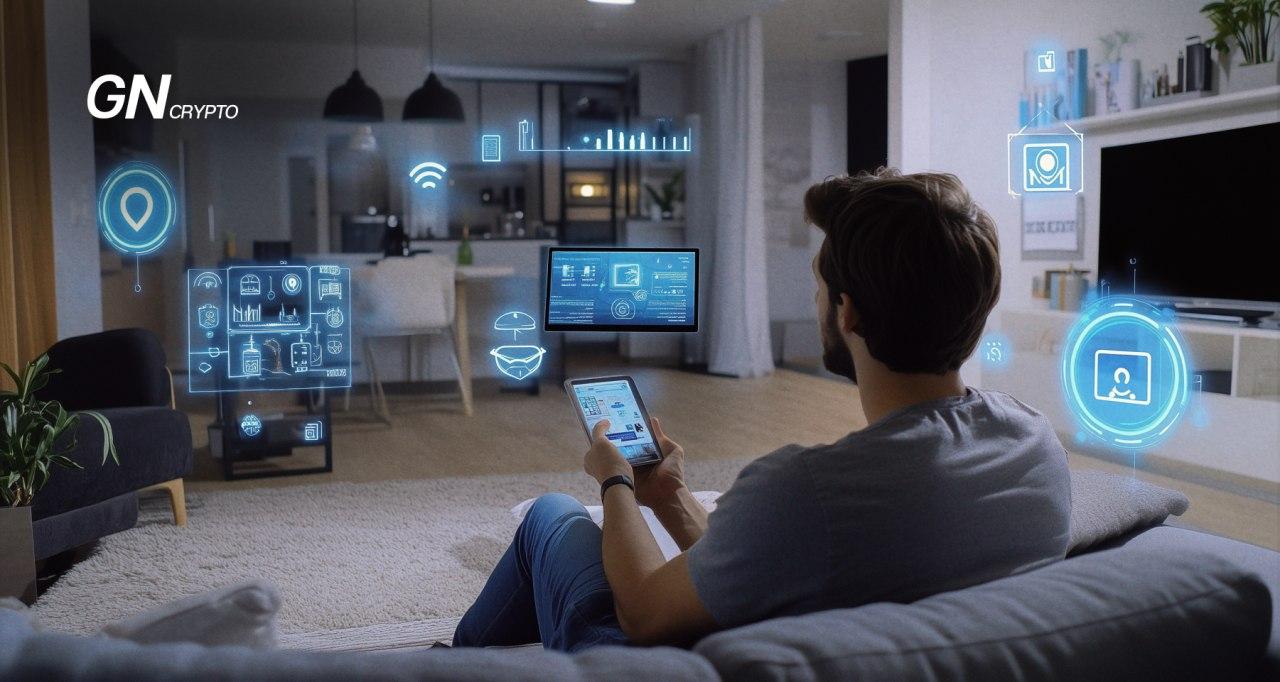Ambient Intelligence: Invisible Technology Changes the World

Ambient Intelligence (AMI) can sense the environment, predict and meet people’s needs intuitively without their intervention. It can recognize the location, the presence of humans, and their movement, analyze received information, and change its functionality accordingly.
On this page
Smart technologies can be integrated into physical environments and everyday devices. Being aware of its surroundings, an intelligent device can initiate interaction by itself, in addition to receiving and responding to commands. For example, based on the user’s calendar and previous requests, virtual assistants like Google Assistant or Alexa can find available times and recommend appointments. After getting the user's confirmation, they proceed to handle the scheduling on the user's behalf.
Ambient Intelligence is becoming omnipresent as it can be found in almost every place: at homes where smart devices such as lights and refrigerators adapt to human presence and daily habits, at medical centers where they help with diagnosis and treatment, in cars where they provide navigation, and in different public places where they monitor air quality and weather change.
An article published in ScienceDirect defines Ambient Intelligence as a paradigm in computer science that aims to create intelligent environments that are aware of a user’s characteristics and can unobtrusively assist them in their daily lives. AMI devices rely on sensors, Machine Learning, and pervasive/ubiquitous computing to make surroundings smart and sensitive.
In 1991, computer scientist Mark Weiser predicted the future of technologies in his work “The Computer for the 21st Century.” According to him, the most profound technologies disappear into the fabric of everyday life until they are indistinguishable from it. Weiser wrote:
Specialized elements of hardware and software, connected by wires, radio waves, and infrared, will be so ubiquitous that no one will notice their presence.
Mark Weiser’s The Computer for the 21st Century. Source: Scientific American
Life-Changing Use Cases of Ambient Intelligence
Every object, from clothing to walls and buildings can become smart due to AMI’s ability to be embedded in the environment. Use cases can go as far as you can imagine. Having built-in sensors and chips that are aware of what is happening around them allows objects to communicate with people and other devices that surround us. There's a large amount of ongoing research and developments related to this technology.
For instance, AMI research includes the study of natural disaster forecasting. Currently, AI systems are used in the field to help with disaster prediction, response, and rescue. Through the algorithmic analysis of satellite images, organizations can identify damages and manage responses, but collecting data is still somewhat restricted. Ambient technology can help upgrade disaster prediction systems by creating a network of sensors in the environment that enable early and accurate predictions and then send findings to emergency centers. By monitoring environmental changes, such as temperature, water levels, and humidity, these systems can predict natural disasters like floods, hurricanes, fires, and earthquakes. During times of crisis, this technology can provide information about affected people and ensure they get assistance.
Another aspect where ambient intelligence is making a big change is healthcare, including patient care and personal well-being management. For example, intelligent detectors can notify nurses when someone falls out of bed, or a caretaker may be alerted when an elderly person leaves home at an unusual hour. When no one is around, a person needing help can turn to their personal assistant to make a call or suggest what to do. AMI changes how doctors and patients interact. Devices can be used in medical care to monitor a patient's health status and provide a more detailed picture of conditions. Smart wearables can track health, providing information on stress levels, heart rate, sleep hours, and more. AMI also aids in clinical documentation, ensuring accuracy while helping doctors focus on treatment instead of taking notes and preparing medical records. Nuance, a Microsoft-owned clinical documentation app, is one of the popular tools that creates draft clinical notes within seconds after each patient visit.
Used in disaster detection and health monitoring, Ambient Intelligence can save lives, but it can also make a difference for everyday use. Providing a layer of personalization, AMI devices can learn about user behaviors and improve their quality of life by helping with a number of daily activities. For example, a smart refrigerator may suggest a shopping list based on a person’s eating habits, and an AMI shower may turn on to an optimal water temperature.
Ambient Intelligence as a Key Step Towards AGI
In the future, AI is predicted to grow into Artificial General Intelligence (AGI), with machines that can learn, understand, and make decisions based on logical analysis. AGI is expected to have human-like intelligence, including understanding different emotions, solving tasks, and generating new, creative ideas. On this path, ambient intelligence is a central component because it provides machines with contextual awareness to recognize their environment, understand human behavior, and respond to various situations.
Yet despite technology's promising use cases, whether it will do good or harm depends on how people choose to use it. There are still challenges related to data privacy and ethics that need responsible solutions.
The content on The Coinomist is for informational purposes only and should not be interpreted as financial advice. While we strive to provide accurate and up-to-date information, we do not guarantee the accuracy, completeness, or reliability of any content. Neither we accept liability for any errors or omissions in the information provided or for any financial losses incurred as a result of relying on this information. Actions based on this content are at your own risk. Always do your own research and consult a professional. See our Terms, Privacy Policy, and Disclaimers for more details.


























